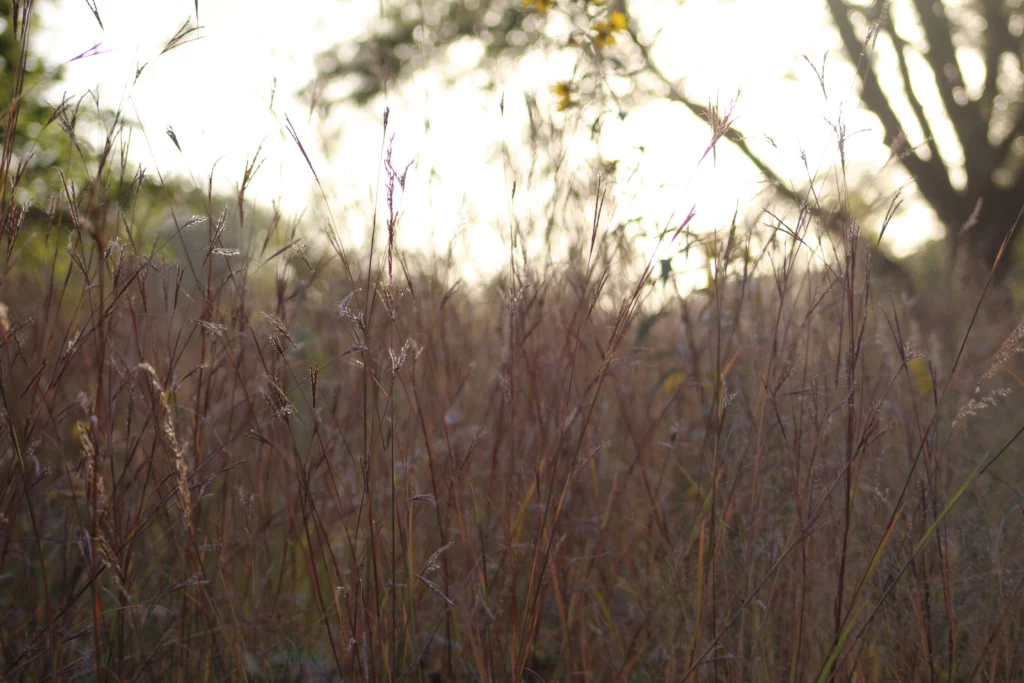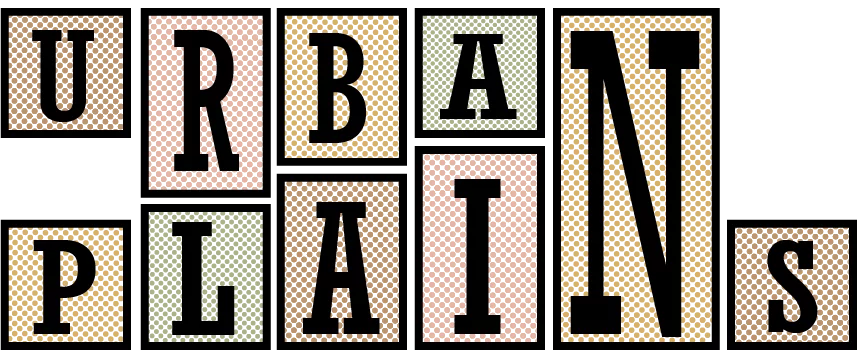Most of America’s tall grass prairies are gone. The Neal Smith Refuge is trying to change that.

Take exit 10A towards Neal Smith National Wildlife Refuge. You follow the GPS instructions and exit off the highway. Continuing straight, you cross the road and are immediately swallowed by prairie grass taller than your car. As if you’ve entered a vacuum chamber, the noise from the highway fades away the further you drive down the winding entrance road.
Reaching the Visitor’s Center, you step out of the car. You’re struck with an unearthly feeling as if your body knows it’s looking out on ancestral terrain. It’s a punch to the gut. It takes all the air out of your lungs. The wind moves your body in the same way it whips through the dry grass, strong and uninterrupted by buildings or trees.
A bird flies against the current and looks as though it’s suspended in the air, dipping and twisting on the wind. Unbothered bison laze under the sun and sit so still it’s hard to believe they’re real. Taking in a deep breath, a sense of rightness fills you, and you know, this feeling is worth fighting for.
The establishment of Neal Smith
Established in 1990, the Neal Smith National Wildlife Refuge is the first and largest reconstructed prairie in the state of Iowa. What was once farmland, the land—near Prairie City, Iowa—was originally named Walnut Creek National Wildlife Refuge. Eight years later, the prairie was renamed to honor Congressman Neal Smith, who was instrumental in the establishment of the refuge. With the mission to protect and restore the native habitat and ecosystems of tallgrass prairie, oak savanna, and sedge meadow, the prairie is home to a plethora of endangered species.
It’s also what used to dominate the area. Before European settlement, prairies used to cover one-third of North America. Tallgrass prairie is one of America’s rarest and most threatened ecosystems, with less than 4% remaining and only 0.1% surviving in Iowa. Despite incorrect assumptions that the land was not nutrient-rich due to the lack of trees, European settlers found prairie regions to hold fertile soil. Created from the decomposition of plants over thousands of years, prairie plants and grasses are less reliant on water in the drier Midwest and can survive fires whereas other ecosystems can’t, says Nancy Corona, a visitor services manager at Neal Smith.
Settlers couldn’t cut through the thick, dense sod, as prairie grass roots can grow up to 15 feet deep—until John Deere developed the steel plow in 1837.
“That really was the beginning of the end of the prairie…in less than a hundred years, it [had] virtually disappeared,” Corona says.
By the time we started to understand the importance of the natural landscape, it was gone. And so began the seed of a dream, which sprouted, and grew into the refuge we see today. While in Congress, Smith had a vision to bring back more public land, something that Iowa had very little of, Corona added. The land that the prairies sits on was owned by a utilities company aiming to make the area a nuclear power plant site. After successfully lobbying Congress, Smith was able to purchase what is now the refuge—a sprawling 6,000 acres. Local seeds from the surrounding remnant prairie were hand collected to reconstruct a prairie, which was innovative, Corona says.
“People were skeptical about it [initially], which is understandable because it was something new,” Corona says. “Looking back, I think [it was] very creative…to say, ‘Let’s try to do something with it.’ So it’s not going to be pristine, but at least we can bring back the wildlife and the ecosystem to the best of our abilities with the technology that we have and so that it’s not lost forever.”
With the aim to grow to 8,650 acres, Neal Smith has not only rejuvenated the plants, but also the surrounding wildlife. Once at a risk for extinction, bison bounced back remarkably with the help of conservationists, like those at Neal Smith, which houses a herd of 62 American buffalo.
USA Today recently named them the best national wildlife refuge in the nation. Despite the many accomplishments the refuge has seen, it also faces a serious lack of funding that hampers its ability to reach its goals.
Standing strong
“In recent years, we’ve had a very strong downtick in funding for federal refuges and that’s across the board… Everybody’s struggling right now with staffing and getting resources,” biology intern Evelyn Ince says.
In the early 2000s, Neal Smith consisted of 14 full-time staff members. Now, there are just three. With adequate funding, Ince says people would be able to specialize in certain areas, be more organized, and the prairie would benefit from the collaboration that could take place.
“Land management, especially for prairies, is just trial and error a lot of times,” Ince says. “If we had that resource right here all the time, I think it would help us a lot just kind of brainstorm what to do about these management decisions.”
With the consistent decline in federal funding, the prairie relies more on volunteer service every day. Ince says that if it were not for the volunteers, Neal Smith would no longer be operational. They’re the soul of the prairie.
Volunteers help with everything from seed collecting and cleaning, to staffing the front desk, all the way to trail maintenance and invasive species management. Their compensation? Seeing the refuge thrive and knowing they played a part, no matter how small.
Out of around 80 total volunteers, the refuge sees 10-15 on a weekly basis, some who travel as far as 40 minutes away and risk the Prairie City speed cameras to enter the vacuum chamber, letting the outside world drift away as they drive deeper into the prairie. Because more than anything, Neal Smith is a timeout from the real world, a reminder of the forgotten practice of getting lost in nature.
“It makes me want to work harder, seeing how much [the volunteers] care about it,” Ince says.
